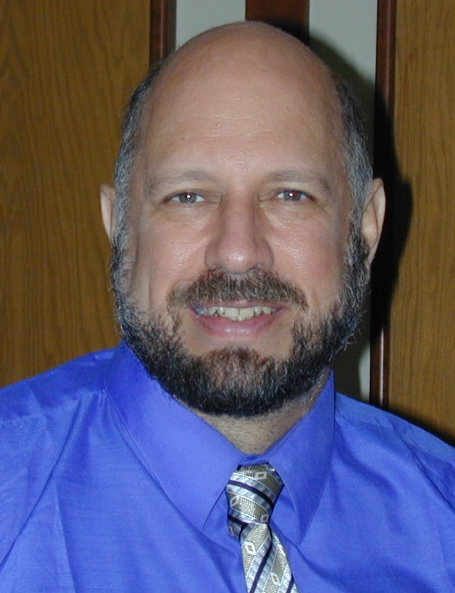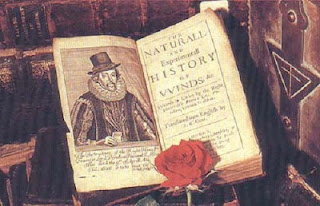By David Dean
It is probably not uncommon for most people to look at previous generations and think, "People were nicer to one another back then; they had better manners." After all, we live in contentious times and the country appears somewhat polarized these days. It's hard to imagine George Washington being rude to anyone, or that anyone would ever think of being rude to him. Ditto for Franklin, Jefferson, etc... Our nation's forefathers all appeared so stately, calm, and resolute. We, on the other hand, seem so quarrlesome and mean-spirited. Not to mention pretty foul-mouthed. It's hard to walk among people, whether in the mall or in the workplace, without being bombarded with the f-word and other oft-repeated, and unpleasant, adjectives and nouns. I use them far too often myself--I plead twenty-five years in law enforcement as my flimsy defense. Violence appears to go hand-in-hand with our current posture. Even murder has to be pretty damn sensational to raise an eyebrow these days--unless, of course, it involves someone close to you.
That being said (or written in this case), a rose-colored view of those that have gone before us is just that--rose-colored...and inaccurate. If you think our present-day politicians are intractable and rude to one another, then you don't know much about their predecessors: fist-fights and canings were not a rare occurence in the capitol of young America. In one instance, a duly elected official was nearly beaten to death with a walking stick on the floor of Congress by another. The run-up to the Civil War was particularly contentious, but there were plenty of unpleasant incidents from the very start. The name-calling; the wholly slanderous accusations, make our current crop of politicians appear positively restrained and angelic. Even death couldn't be ruled out for national figures--remember the Burr-Hamilton duel.
 |
| The Infamous Duel at Weehawkin, New Jersey |
What suggested this topic to me is a story that I am currently working on. It is a period piece set in the Ante-Bellum South. It involves ferocious acts of violence by characters who are, by and large, very polite. It got me to thinking about civility and vilolence, murder and manners. A close friend of mine once said (and I paraphrase), "If it weren't for manners here in Georgia, half the population would murder the other half!" I'd like to think that's not strictly true, but I understood his point. We need some ritualized behavior in our lives that makes resorting directly to conflict, or violence, a longer road to travel. Manners present an acceptable way to speak to people and to behave in the company of others. It gives us an alternative to thoughtless words, affrontive attitudes. They buy us time to think things through.
Yet again, however, it would be naive to think these practioners of politeness are immune, and certainly incorrect to think that the mannered classes of any era had a lock on good behavior. In fact, those same courtesies could be bent and purposed to achieve malicious goals. It was not uncommon for one man to prick and goad his chosen target, in the most polite language, of course, until the tormented man could take no more and issued a challenge. During the dueling days of our nation the man who challenged surrendered the right of choosing weapons. So the silver-tongued devil that truly engineered the fight gained the advantage from the beginning. This could seal a man's fate in some cases. In fact, a man might be such a master of a particular weapon that it was virtually murder on his part to insist on its use. Hence the incentive to
be challenged and not the other way around.
Duels, though couched in myth and legend, were hardly polite even when they were highly ritualized--and they weren't always even that. Oftentimes, after the heat of the challenge and during the planning phase of the contest, tempers might cool. In this case, the seconds (usually close and trusted friends and advisors of the combatants) would get together and discuss honorable terms for resolving the conflict without violence. These efforts were very often successful, as few people, given a little time to think about it, want to risk death or maiming over some heated and, probably, alcohol-fueled, exchange. Not always though.
Once it was decided to carry through on the challenge, the opponents would meet in a secluded area away from the prying eyes of law enforcement. Duelling was generally illegal. Having met, the opponents, if armed with pistols, had several decisions to make: Upon being given the command to commence, one, or the other, could fire their round into the air, signifying that honor had been satisfied by the courageous behavior exhibited so far by both parties. This was a dangerous choice. If the other man had not yet fired, he still had the right to do so. The first man was expected to remain standing on the field until he did...or didn't. To flee was to expose himself to being shot by any member of the opponent's party of seconds. It would also brand the man a coward. To remain standing there must have been a nerve-wracking exercise. If the other man fired his pistol into the air, then honor was satisfied all round. Brandy was, no doubt, produced and everyone went home with a good story and reputation intact.
Or...you got shot. This was usually accomplished with a .50 caliber ball that did a lot of damage even if it wasn't fatal. The odds were excellent that you would die of blood loss or infection before all was said and done. Sometimes you just lost a limb.
The same rules applied if you fired and missed. You still had to wait the other guy's turn. If you both fired and missed, then the option of retiring from the field with honor was discussed. If this was not mutually agreeable, the pistols were reloaded and the whole ritual was repeated until someone got shot--not your normal day at the office.
 |
| German Sword Duelists |
Dueling with swords was not as popular in America. It seems we have always been a gun nation. Knives are another matter. Largely thanks to Jim Bowie, knife fighting went through a period of popularity in the early 1800's. James Bowie was credited with the invention of the 'Bowie' knife. Historians think that it was actually his brother, Rezin, who designed the famous blade. As the original has been lost in the mists of time we shall never know exactly what it looked like. What we do know is that it was designed with the specific purpose of self-defense.
 |
| A replica of what the original was believed to look like. |
Jim made the Bowie knife a household word after his famous "Sandbar Fight." This bloody brawl was the culmination of several years of bad blood between two political rivals and their supporters in Mississippi (what did I tell you about these old time politicians?). A duel was arranged on a sandbar in the Mississippi River that was often used for this purpose. The aggrieved parties, their seconds, and their supporters, all showed at the duly appointed time...and all hell broke loose. Before it was over several men had died by Bowie's blade and he lay grievoulsy wounded and near death--a legend was born.
Bowie recovered and went on to kill more people, though it would be unfair to characterize these encounters as duels--like the Sandbar, they were fights and brawls. He was not a nice man. Even so, a fad of sorts was begun and knife duels flourished for a short while. Knife fights were particularly brutal and ugly affairs and the outcomes uncertain in the extreme. Hence the time-honored joke: How can you tell who is the winner of a knife fight? Answer: He's the second man to die. Oddly, the mystique has persisted. Even when I was young (a scant few years ago) a certain glamor was attached to knife duels. Fighting knifes (daggers and such) were sometimes referred to as Georgia boxing gloves. Thankfully, I was never on the receiving end of any such encounter.
In spite of all the romantic hogwash surrounding dueling, most of our American forebears frowned on the practice (scratch Andrew Jackson on that, as he both liked and was good at them). Beyond the moral and legal implications, there were the practical concerns to be considered: What of the families left behind? Who would take care of them? How would they survive? There were
no safety nets then.
So, as you ponder the woeful state of our national discourse, and shake your head at the coarsening of American civility, just remember this, it could be worse...you could be living in those far more polite, mannered, and deadly days of yore, when your opinion might cost you your life, and stating it required actual physical courage.








 Although I retained the templates I'd created before, I decided to format a document for a manuscript. It's taken HOURS to figure out the new and improved Microsoft Word. With that in mind, I'll pass on a few tips just for creating smart headers that will maintain the date, page numbers, and word count.
Although I retained the templates I'd created before, I decided to format a document for a manuscript. It's taken HOURS to figure out the new and improved Microsoft Word. With that in mind, I'll pass on a few tips just for creating smart headers that will maintain the date, page numbers, and word count. 























